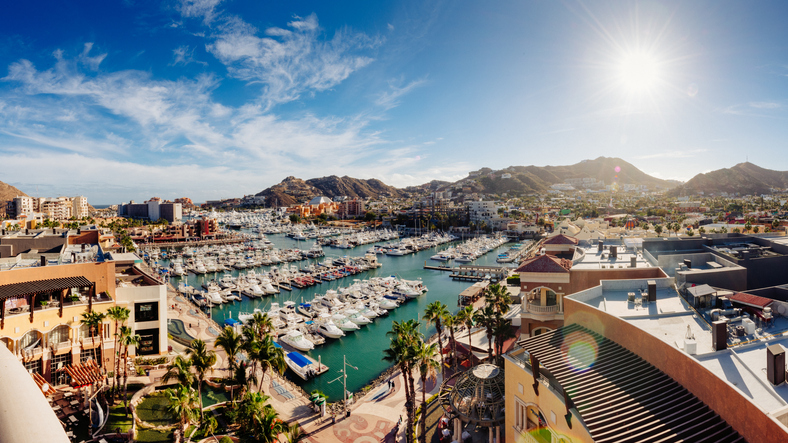
Many New Residents of Los Cabos are familiar with the development of the area as a tourist destination; however, they are unaware of the rich history of Los Cabos. Whether we are talking about the WII-era ex-pilots and business people or the establishment of the sport fishing industry, the area is teeming with history.
It is easy to think of all of the tourists and transplants in the area, but Los Cabos’ history is much more than entertainment. For example, Plaza Pioneros in Cabo San Lucas is a dedication to the men who built this area. Great men like Don Luis Bulnes, Luis Cóppola, and William Matt Parr all had their hand in what is now known as Los Cabos.
Geographically speaking, the municipality of Los Cabos is impossibly old. It is estimated that the granite monuments found in Land’s End Headland formed somewhere around 30 million years ago.
Many people are responsible for the development of the area, but a majority of them were an unusual mixture of Pericúes, soldiers, priests, or pirates. These journeymen traveled the lands along the Baja California peninsula seeking God or fortunes. Let’s take a brief look at the first inhabitants of the area—the distant past when the first inhabitants came by raft from Melanesia.
A Glimpse into Los Cabos History
Los Cabos has a long and arduous history, but it is known that humans have inhabited the area for more than 10,000 years. For most of this period, it was inhabited mostly by hunter-gatherers known as the Pericú.
Little is known about the Pericú. However, a few tribes called the Chicorí, Botón, and Gerónimo made it into the annals of history for plotting to kill the invading Spaniards.
It should come as no surprise that due to the lack of information, most of the historical information comes from the Spanish colonial period.
The territory of the Pericú included most of the peninsula, the East Cape, and also the East Cape and the islands closest to La Paz: Cerralvo, Espírtu Santo, Partida, and San José. They may have also had territory in what is now present-day La Paz. However, that was known as a highly disputed territory.
Since the Pericú have been culturally and linguistically extinct for more than 250 years, most of their history is from the European perspective, who considered them “savages.”
Spanish Conquest
Encounters with Los Cabos’ first human inhabitants were rare, until 1534 when a Spanish ship cruised into the Bay of La Paz. That ship was commission by Hernán Cortés, who was mainly responsible for the “Conquest of México.” The same man who was also responsible for decimating the Aztecs in 1521.
Cortes wrote to the king of Spain, quoting hearsay of gold, women, and pearls on the islands. The king then promised Cortés 1/10th of all the land and fortune that he discovered in the area.
Hernan Cortés wasn’t the only outside visitor to La Paz. Present-day San Jose del Cabo was a frequent stopping point for traders. It was along with one of the world’s most lucrative trade routes, and by the 16th century, the first permanent settlement on the Baja Peninsula was established in 1697.
Wars Abound
In the years previous, many settlers attempted to build settlements in La Paz but were unsuccessful due to shortages of food or water, or the constant attacks of indigenous tribes. The next few centuries were a continuous battle between Jesuit Missionaries and Spanish settlers in an attempt to conquer the “savage” Pericú and settle in the region.
The ensuing middle decades of the late 18th and 19th centuries were filled with intense conflict in Baja, California. The U.S. army and navy had invaded during the Mexican-American War, and many U.S. citizens populated the area chasing after get rich quick schemes.
Western Development
The Mexican-American War was a disaster for the Mexican side, but from the U.S. perspective, it was a version of “manifest destiny,” which was their claim to develop westward.
In the years 1850-1900, at the end of the Mexican American War, the territory of Baja California was narrowly saved from being included in the Treaty of Guadalupe Hidalgo. Baja, California, was an object of intense American interest. The U.S. attempted to extract money through mining, real-estate development and even filibustering.
A Modern Residence
From 1885 to 1990, Los Cabos saw an explosion in both residential populations and tourism. Condominiums Cabo Bello, Marina Sol, and Terrasol, and hotels Melia San Lucas, Melia Cabo Real, Fiesta Inn, Calinda, Posada Real, and Plaza las Glorias were all up and running by the year 1990. Vacationers and retirees built an excess of 3,000 private residences as well.
While Hernan Cortez saw no future in Los Cabos, it is now home to world-class golf clubs and resorts. Not only is Los Cabos a great place to visit, but it is a fantastic place to call home. We can help you find the perfect home in Los Cabos. Get in touch by calling us on +52.624.157.6323 or send an email to iangengosrealty(at)gmail(dotted)com.